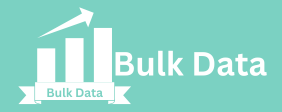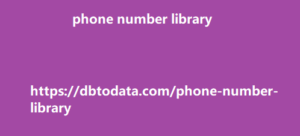others have to say without adding much value of your own? What impression will your content leave on a reader? Will they learn something new or experience something satisfying? Do you create valuable content while keeping Google’s guidelines and core algorithm updates in mind? Does your content promise to answer a question without a clear, confirmed answer yet, or one that hasn’t been confirmed? Does your visual content follow Google’s image web design and interface mobile-friendly? Is your content likely to receive backlinks because of its resourcefulness and value? These questions will help you plan and create substantial content for your website that’s aligned with your audience and Google’s recommendations.
Check your internal and external links
periodically Did you know that backlinks help to establish the expertise, authority, and trustworthiness (E-A-T) of your website? Links are an active and powerful ranking signal to this day. When other websites cite your website or web page via links, it shows Google that you’re authoritative and trustworthy. To maintain your website’s rankings, you will need to check your internal and external links periodically. Internal links or interlinks are hyperlinks that point from a page in your site to another page on your site. Internal links help users navigate your site and find the content they are searching for.
What internal links do for SEO is that
it helps search engines find and understand the value, relevance, and relationship between your web pages. On the other hand, external links or outbound links are hyperlinks that point from your website to an article on a third-party website. Every time you link to another website altogether, it is an external link. I’m guessing your next question here is, does creating outbound links matter in SEO? Some SEO specialists agree it matters in SEO, while some don’t. In any case, how I decide is if it helps the reader know more about the topic or the content that I wrote, I will link out for sure.
Every external link included in our content
is meant to cite relevant and authoritative sources. Consequently, these links let my readers learn more about the topic deeply. In addition, it also gives me the opportunity to build some expertise and authority to the content I wrote as well. An experiment done by Reboot Online showed how external links can help improve your website’s ranking. Their study concludes that “outgoing relevant links to authoritative sites are considered in the algorithms and do have a positive impact on rankings.” To learn more about their updated study in-depth, you can read about it here. What this study and my personal experience concludes is that linking to sites with good contextual authority has a positive impact on your content’s rankings when done correctly.
It helps send trust signals to Google
But why do you need to occasionally cayman islands phone number library check your hyperlinks? Remember, we create content for people. If someone clicks on a link and receives an error message, they are more likely to leave the site. Links that no longer work or are inaccessible are called broken links. While broken links do not directly affect your website’s rankings, inaccessible links directly affect user experience – which I could argue is a ranking factor. Optimize your titles, meta descriptions, and alt text for images You shouldn’t neglect the small details like titles and meta descriptions that contribute to your website’s organic traffic and ranking.
Titles and meta descriptions play a major
role in making your website visible in the search results. These elements aren’t considered on-page ranking factors per se, but what they do is they help searchers see and understand what your website or your webpage is about straight from the search results page. meta description screenshot A lot of people click on titles and meta descriptions on search engine results pages (SERP) that contain relevant summaries. When searchers click on your website’s title and meta description related to their query, your click-through rate (CTR) increases. On the other hand, adding alternative text (alt-text) to your images plays a role in making your websites rank because of its importance on Google Image Search.
If an image doesn’t load or is inaccessible
to a web browser, an alternative a native ad for a tourism company text provides a helpful description of the image to users. In essence, adding alternative text to images is like hitting two birds with one stone: it helps searchers who may have images or scripts turned off in their web browser understand what your image is about. Similarly, it helps Google bots crawl and index your website better. So, if you haven’t optimized your website’s titles, meta descriptions, or your images’ alt-texts yet, now’s the time to do so. If you don’t know how to optimize your meta description, here’s a helpful post where we share some useful tips on how to do it.
Key Takeaway In SEO, nothing is sacred
This is why SEO is never a one china data-time fix. Rankings in search results aren’t permanent. Search engines like Google constantly update their algorithms. Plus the fact that your competitors can catch up and get ahead if they employ better SEO strategies. Whatever tactic or strategy you have in place now for your website to rank may not work tomorrow. This is why SEO maintenance is important. By regularly performing these and other web maintenance tasks,Did you find this article helpful? Let me know in the comments below.

